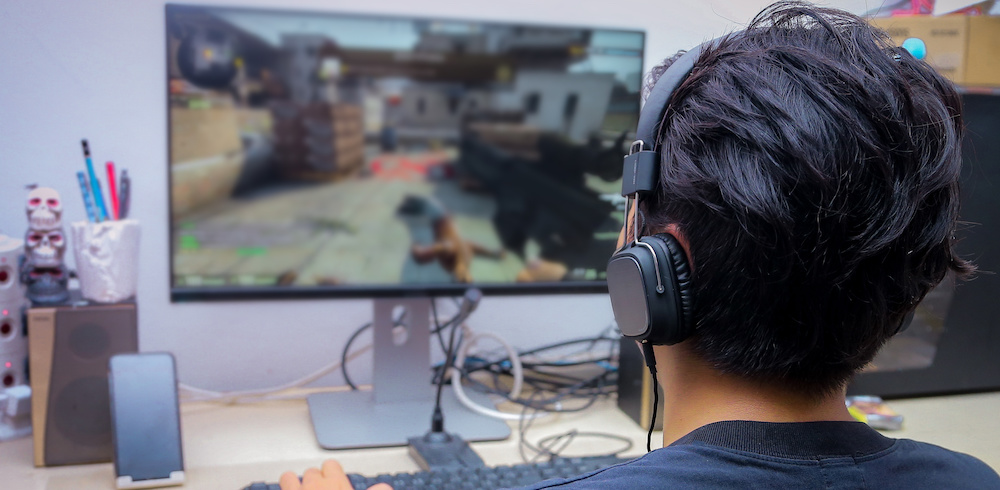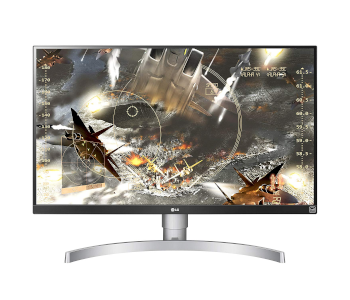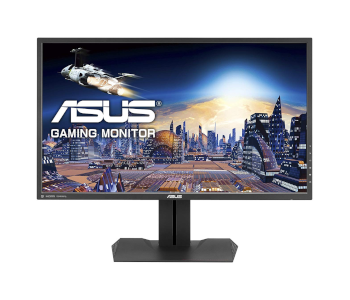5 Best FreeSync Monitors of 2019
Getting one of the best FreeSync monitors can make your gaming experience smoother, especially if you are very sensitive to screen tearing and stuttering. However, shopping for one is difficult, considering there are dozens of options on the market.
We’re here to make things easier for you. In this guide, we have compiled the best monitors that support FreeSync, from a curved monitor to a budget TN monitor. All products included here offer good all-around quality and value, making them suitable not only for serious gaming but also for general use.
| Budget |
|---|
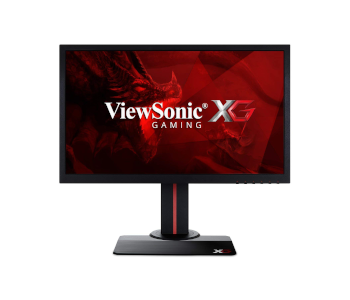 |
| ViewSonic XG2402 |
| 4.2/5.0 |
| Size: 24 in |
| Resolution: 1920 x 1080 |
| Good ergonomics, low input lag, and fast response time. |
| Check Amazon |
| Best Value |
|---|
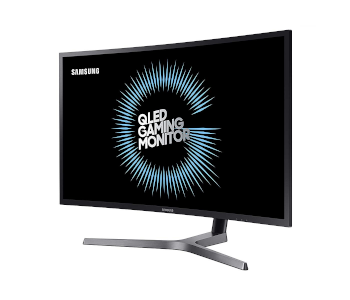 |
| Samsung C32HG70 |
| 4.5/5.0 |
| Size: 32 in |
| Resolution: 2560 x 1440 |
| High native contrast ratio and has HDR support. |
| Check Amazon |
| Top Pick |
|---|
 |
| Nixeus NX-EDG27 |
| 4.6/5.0 |
| Size: 27 in |
| Resolution: 2560 x 1440 |
| Good picture quality and minimal backlight bleed. |
| Check Amazon |
AMD FreeSync: A Brief Explanation
FreeSync is an adaptive synchronization technology developed by AMD. It’s essentially the same as Nvidia’s G-Sync in functionality. It synchronizes the monitor’s refresh rate to the graphics card’s output. For example, if the graphics card is pushing out 45 frames per second, FreeSync will cause the monitor to output in 45 Hz. If the framerate goes up to 50 Hz, it will switch the monitor to 50 Hz.
This process is seamless and reduces screen tearing and stuttering, translating to a significantly smoother gaming experience. However, not all monitors are equal when it comes to FreeSync range. Some boast a wide 30-144 Hz range while others have a much narrower 40-60 Hz range. If the GPU output goes to a number outside the monitor’s effective FreeSync range, you don’t get the full benefit of FreeSync.
While they are very similar in functionality, FreeSync and G-Sync bring different pros and cons to the table, fueling the debate about which is the better tech. The most notable difference between the two techs is FreeSync’s more open nature, as its name suggests. It doesn’t require proprietary hardware that drives up the monitor cost.
That’s the chief reason there are more FreeSync monitors on the market, not to mention they are cheaper than G-Sync monitors. Additionally, FreeSync monitors usually offer more connection options, making them more versatile. Concerning supported GPU, both adaptive sync technologies are about the same at the moment.
On the flip side, G-Sync monitors are more consistent than FreeSync ones and offer a more premium gaming experience overall. FreeSync performance varies from monitor to monitor simply because companies implement the tech differently. For example, the FreeSync range and the input lag are not uniform among monitors.
Since both bring pros and cons, there is no clear answer as to which adaptive sync is the better one. We’ll just put it this way: If you have an AMD graphics card, get a FreeSync monitor. If you have Nvidia graphics card under the hood, go for a G-Sync monitor.
FreeSync Monitors Comparison Table
| Make and Model | Rating | Size | Resolution | Refresh Rate | Response Time | Panel Type | Weight | Price |
|---|---|---|---|---|---|---|---|---|
| Nixeus NX-EDG27 | 4.6 | 27 in | 2560 x 1440 | 144 Hz | 4 ms | IPS | 10 lb | Check Price |
| ViewSonic XG2402 | 4.2 | 24 in | 1920 x 1080 | 144 Hz | 1 ms | TN | 14.8 lb | Check Price |
| Samsung C32HG70 | 4.5 | 32 in | 2560 x 1440 | 144 Hz | 1 ms | VA | 21.2 lb | Check Price |
| LG 27UK650-W | 4.1 | 27 in | 3840 x 2160 | 60 Hz | 5 ms | IPS | 13.7 lb | Check Price |
| Asus MG279Q | 4.2 | 27 in | 2560 x 1440 | 144 Hz | 4 ms | IPS | 16.1 lb | Check Price |
1. Best Pick: Nixeus NX-EDG27
Editor’s Rating: 4.6/5
Nixeus isn’t one of the first names consumers think of when shopping for monitors, but don’t let its small reputation affect your final decision. The California-based company offers the best 27-inch, 1440p FreeSync monitor currently out on the market in the form of the NX-EDG27. It’s an IPS monitor selling for about $430, with Nixeus also offering a slightly cheaper model with a non-adjustable stand.
At first glance, the NX-EDG27 definitely won’t impress you, considering its rather bland design that includes a noticeably thick bezel. It’s got a very basic look from top to bottom, although its wide stand does seem somewhat appealing. It has a clean back panel, with all the input ports lined up in the center – including the DisplayPort and the HDMI.
The NX-EDG27 has a solid stand with no serious wobbling issues, featuring a small hole for convenient cable management. You can tilt the screen forward and backward, swivel from side to side, and adjust the height. You can also switch the screen to portrait mode. However, adjusting the stand won’t be smooth in the beginning, but it should loosen up after a little break in. Although the NX-EDG27 has much better ergonomics than its non-height-adjustable counterpart, it’s not on the same level as other monitors on the market such as the Dell U2718Q.
Nixeus sends out the NX-EDG27 in a neat and well-secured package similar to monitors from more popular big-name companies. The unit arrives with good default settings, featuring good color accuracy and brightness. Adjusting the monitor settings is not as intuitive as with LG monitors, though, due to the rather generic on-screen display (OSD). On the plus side, the control buttons on the bottom edge are clearly marked, which can’t be said for a lot of monitors out there.
What makes the NX-EDG27 easily stand out from the competition is its extremely smooth performance when FreeSync is active. It can make first-person shooters, racing simulations, and other fast-paced games a lot more enjoyable, featuring an excellent 30-144 Hz FreeSync range, which is one of the best out there. It has a low input lag and comes with a native 2560 x 1440 resolution, often considered the most suitable for a 27-inch screen.
IPS monitors are often criticized because of their backlight bleed issues, which make them unsuitable in a dark room. Nixeus, however, did a great job keeping backlight bleed to a minimum in this monitor. A lot of users have reported not having any issues with the NX-EDG27 regarding backlight bleed, which is a big plus.
The NX-EDG27 has a good picture quality overall. It has good color reproduction, with the ability to produce vibrant and crisp images. It has good viewing angles, too. While it’s most ideal for serious gaming, the NX-EDG27 also works well as a monitor for non-gaming use, such as media consumption and office work.
Overall, the NX-EDG27 is the best FreeSync monitor currently out. It’s got excellent FreeSync performance with Low Framerate Compensation (LFC), multiple input options, a low input lag, and a high native resolution. And best of all, it sells for well under $500, making it a fantastic choice all around.
| Tech Specs |
|---|
| Size: 27 in |
| Resolution: 2560 x 1440 |
| Refresh Rate: 144 Hz |
| Response Time: 4 ms |
| Panel: IPS |
| Weight: 10 lb |
| The Pros |
|---|
| Excellent FreeSync range |
| Good picture quality |
| Minimal backlight bleed |
| Very low input lag |
| Good ergonomics |
| VESA mount compatible |
| The Cons |
|---|
| No USB hub |
| Generic on-screen menu |
2. Best Budget: ViewSonic XG2402
Editor’s Rating: 4.2/5
Considered one of the best cheap 144 Hz monitors, the ViewSonic XG2402 is the best option for those who can’t afford to spend over $300 on a good FreeSync monitor. It’s a 24-inch gaming monitor that goes for about $250. It has a good FreeSync range, and while it has a TN panel, it offers better picture quality than most other budget TN monitors on the market.
Compared to the Nixeus product above, the XG2402 has a more stylish design, with a nice lighting system on the back panel, making it at home with your other glowing peripherals. It’s got a solid build quality, with a well-secured frame and a stable stand. The stand is easy to adjust out of the box and offers good ergonomics. You can adjust the height, swivel and tilt the screen, and rotate it to portrait mode.
The XG2402 has thick borders, though, which is a big turn off for those who prioritize form over function. For a multi-monitor setup, this ViewSonic monitor is not a recommended option because of its thick bezel. If you want the most suitable products for that kind of setup, consider looking into the best bezel-less or frameless monitors.
Cheap monitors under $300 often come with few connection options. The XG2402 is not in the same boat. It has a pair of HDMI, a DisplayPort, and even a USB hub with two USB 3.0 ports. All ports are at the rear, positioned downward. For cable management, the XG2402 has a small loop on the stand.
The XG2402’s control buttons are on the bottom right corner, under the frame. While only lightly marked, they are easy enough to use. On the other hand, navigating the on-screen menu can be a bit of a hassle. The OSD is not well implemented and can be very confusing sometimes, so expect the initial calibration to take longer than usual.
The XG2402 offers a very smooth FreeSync performance, making it ideal for competitive multiplayer games such as Overwatch, Counter-Strike: Global Offensive, and Call of Duty: Black Ops 4. It has a good FreeSync range (48-144 Hz) and boasts a very low input lag, which is good news for fighting games enthusiasts.
On the flip side, the XG2402 has inferior picture quality and viewing angles compared to an IPS monitor, which isn’t surprising. Still, as mentioned, it’s better than most cheap TN monitors, so don’t judge it too harshly because of its unimpressive overall color reproduction. Considering its panel tech, you shouldn’t expect it to make your jaw drop while playing games with gorgeous visuals. But for fast-paced competitive games like the titles mentioned above, the XG2402 will definitely impress you with its smooth performance.
In all, the XG2402 is one of the best FreeSync monitors currently out. It’s a well-built monitor with multiple input options, good ergonomics, a very fast response time, and smooth FreeSync performance. Get this product if your wallet dictates you can only spend less than $300 for a good monitor with FreeSync support.
| Tech Specs |
|---|
| Size: 24 in |
| Resolution: 1920 x 1080 |
| Refresh Rate: 144 Hz |
| Response Time: 1 ms |
| Panel: TN |
| Weight: 14.8 lb |
| The Pros |
|---|
| Good FreeSync range |
| Multiple connection options |
| Good ergonomics |
| Low input lag |
| Fast response time |
| The Cons |
|---|
| Poor viewing angles |
| On-screen menu can be confusing |
3. Best Value: Samsung C32HG70
Editor’s Rating: 4.5/5
The 32-inch Samsung C32HG70 is an excellent all-around monitor for both gaming and non-gaming use, featuring a good FreeSync range, an intuitive joystick control, and HDR support. It’s the larger and more expensive model in the CHG70 series, selling for more than $500. If you can’t afford to cough up that much, go for the smaller 27-inch model, which sells for around $450.
The C32HG70 is a VA monitor and it has the most striking design among the monitors mentioned in this guide, boasting a curved screen with a 1800R curve radius and a bent stand. It has a large overall footprint, mostly due to its stand’s design. When the stand is removed, the monitor itself is fairly thin and makes for a good wall-mounted monitor.
The C32HG70’s overall design is both functional and appealing. It has a stable stand with decent ergonomics, with options to adjust the height as well as swivel and tilt the screen. The stand has cable management in the form of a small loop right in the middle. The C32HG70’s borders are fairly thin, but not as thin as the bezels on the best thin bezel monitors.
This Samsung monitor has a clean back panel with a matte finish. The ring around the stand mount lights up, similar to that of the 49-inch Samsung CHG90, one of the best curved ultrawide monitors on the market. The connection ports are at the rear and are easy enough to access; the C32HG70 has a DisplayPort, two HDMI ports, a mic in, a headphone port, and two USB 3.0 ports, one of which can be used for fast-charging.
Also found on the back panel is the small joystick used to control the on-screen menu. It’s a lot more intuitive than the regular function buttons commonly seen on monitors. The on-screen menu itself is well-designed and offers a bunch of options. Because of the intuitive joystick control and very good OSD design, calibrating the C32HG70 is hassle-free.
While it will easily impress you with its aesthetics, the C32HG70 is not just about outside appearances. It also offers great performance when used for both gaming and general use. It’s got a good effective FreeSync range of 48-144 Hz (although it’s worth noting that the C32HG70 originally had a poor range and needed a firmware update to unlock its full range). Additionally, it has a very low input lag when running in its native resolution, which makes it suitable for fast-paced games that require quick reactions.
The C32HG70’s overall picture quality is good. It’s got good HDR performance, boasts a high native contrast ratio, and is more suitable in a dark room than IPS monitors. The bad news is that it has narrow viewing angles, which means you need to be in a sweet spot in front of it to get the best viewing experience possible.
Wrapping up, the C32HG70 offers great value for the price. It has a good picture quality, a large screen, Low Framerate Compensation (LFC), a USB hub, HDR support, and a sexy curved screen. If the C32HG70 is too expensive for you, and our top pick isn’t your cup of tea, consider the smaller and lower-priced C27HG70 instead.
| Tech Specs |
|---|
| Size: 32 in |
| Resolution: 2560 x 1440 |
| Refresh Rate: 144 Hz |
| Response Time: 1 ms |
| Panel: VA |
| Weight: 21.2 lb |
| The Pros |
|---|
| Good FreeSync range |
| Intuitive joystick control |
| High native contrast ratio |
| HDR support |
| Decent stand adjustability |
| Very low input lag |
| The Cons |
|---|
| Large overall footprint |
| Narrow viewing angles |
4. LG 27UK650-W
Editor’s Rating: 4.1/5
You can’t go wrong with most LG monitors. The South Korean company is known for its quality monitors at different price points, with the LG 27UK650-W being one of the best ones with FreeSync support. You can get it for just around $400, a figure that becomes more appealing once you consider the 27UK650-W is a 4K UHD monitor.
A 27-inch IPS monitor, the 27UK650-W has a clean and functional design, featuring a very thin bezel and a white back panel with easily accessible input ports. Like with many other LG monitors, it’s got a wide stand with a curved base. The stand, which has a ring for cable management, is easy to adjust and offers height adjustment, forward-backward tilting, and the option to switch to portrait mode. The 27UK650-W is also VESA mount compatible, so feel free to mount it on the wall to get more desk space.
The 27UK650-W’s back panel is pretty basic and has a plastic construction. It has two HDMI ports, a DisplayPort, and an audio out, all of which are outward-positioned for easy access. Sadly, there are no USB ports on this LG monitor, which means you can’t connect other peripherals or charge your smartphone.
As with many other LG monitors, the 27UK650-W has a small joystick at the bottom for navigating the on-screen menu. While it’ll take a bit of time to get used to it, the joystick control is more intuitive than the usual buttons and makes navigating the menu much easier. Unlike with the Acer Predator X34P, one of the best curved ultrawide monitors, the small joystick doesn’t feel cheaply built.
Of the monitors on this list, the 27UK650-W is arguably the most suitable for productivity, courtesy of its large screen and native 4K resolution. It’s great for multitasking and works well for graphics design, web development, internet surfing, reading documents, and coding. And because it has good ergonomics, it’s easy to adjust for the most comfortable setup on your work desk.
For serious gaming, the 27UK650-W is definitely not for everyone. On one hand, it has great color reproduction and a 4K native resolution. It’s got a very low input lag and HDR support, and its thin bezel makes it ideal for a dual-monitor gaming setup. On the other hand, it has a 60 Hz native refresh rate and a narrower FreeSync range (40-60 Hz) than the other monitors in this guide. It’s good for 4K gaming, but for fast-paced competitive multiplayer games, our top picks are more recommended.
If you want a reasonably priced 4K UHD monitor with FreeSync support, the 27UK650-W is one of the best options on the market. It has a good picture quality, a fast response time, an intuitive joystick control, and a good build quality overall.
| Tech Specs |
|---|
| Size: 27 in |
| Resolution: 3840 x 2160 |
| Refresh Rate: 60 Hz |
| Response Time: 5 ms |
| Panel: IPS |
| Weight: 13.7 lb |
| The Pros |
|---|
| 4K native resolution |
| Good picture quality |
| HDR support |
| Intuitive joystick control |
| Low input lag |
| Good ergonomics |
| The Cons |
|---|
| Low native contrast ratio |
| No USB hub |
5. Asus MG279Q
Editor’s Rating: 4.2/5
Asus offers two good monitors with FreeSync support: the MG279Q and the MG278Q. The former has an IPS panel and sells for a little over $500 while the latter is a TN monitor that goes for around $480. Both products are solid options. Of the two, the MG279Q is the better all-around option and works well for both gaming and non-gaming use.
The 27-inch MG279Q has a straightforward design, with none of those fancy cosmetics seen on other monitors marketed toward gamers. It has fairly thin borders all around. It’s got a rigid stand with a flat base and cable management.
You can easily adjust it to a more convenient position, with options to adjust the height and tilt and swivel the screen. You can also rotate to portrait mode. Adjusting the stand is smooth and easy out of the box, with no need to apply a lot of force.
All connection ports are at the rear, positioned downward and easy to access. The MG279Q has two HDMI ports, a DisplayPort, a Mini DisplayPort, and two USB 3.0 ports for connecting a keyboard, a mouse, or other peripherals. It has a VESA mount, too, allowing for a wall-mounted monitor setup for a more clutter-free desk.
Like the LG 27UK650-W and the Samsung C32HG70, the MG279Q has a joystick control for menu navigation. The joystick, along with the other function buttons, is located on the side edge, similar to the Samsung C32HG70. It’s easy to use, making navigating the on-screen menu more convenient than when using the usual buttons.
The MG279Q also comes with built-in speakers. However, the integrated speakers have poor sound quality and are best left ignored. But to be fair, most monitor speakers are not that great, even the ones on high-end models. For gaming and watching movies, it’s best to use external speakers or some of the best headphones on the market.
As mentioned, the MG279Q is a better all-around option than the MG278Q, and the chief reason for that is its better picture quality. It has good color reproduction and viewing angles but has below-average contrast ratio. It’s good for general office work as well as media consumption, with its high resolution making things more detailed.
The MG279Q is a good monitor for gaming. It has a low input lag, a fast response time for an IPS monitor, and, of course, AMD FreeSync support. However, compared to our top pick from Nixeus, this Asus monitor is a few steps behind. It has a high native refresh rate, but the actual FreeSync range (35-90 Hz) is rather pedestrian and might not impress hardcore gamers.
In all, the MG279Q is a solid monitor overall, featuring a good picture quality, a high native refresh rate, Low Framerate Compensation, and a USB hub. It’s one of the best FreeSync monitors on the market. If, however, you want an even faster response time and a better FreeSync range, consider the cheaper MG278Q instead.
| Tech Specs |
|---|
| Size: 27 in |
| Resolution: 2560 x 1440 |
| Refresh Rate: 144 Hz |
| Response Time: 4 ms |
| Panel: IPS |
| Weight: 16.1 lb |
| The Pros |
|---|
| Good picture quality |
| Easy-to-use joystick control |
| Fast response time |
| Wide viewing angles |
| Fully adjustable stand |
| Good connectivity options |
| The Cons |
|---|
| Narrow FreeSync range |
| Poor audio quality |
Contents

